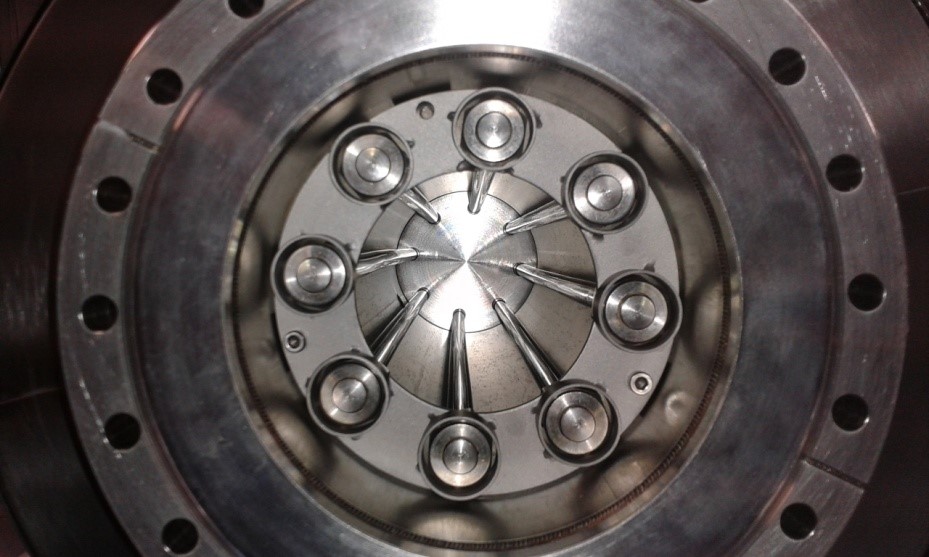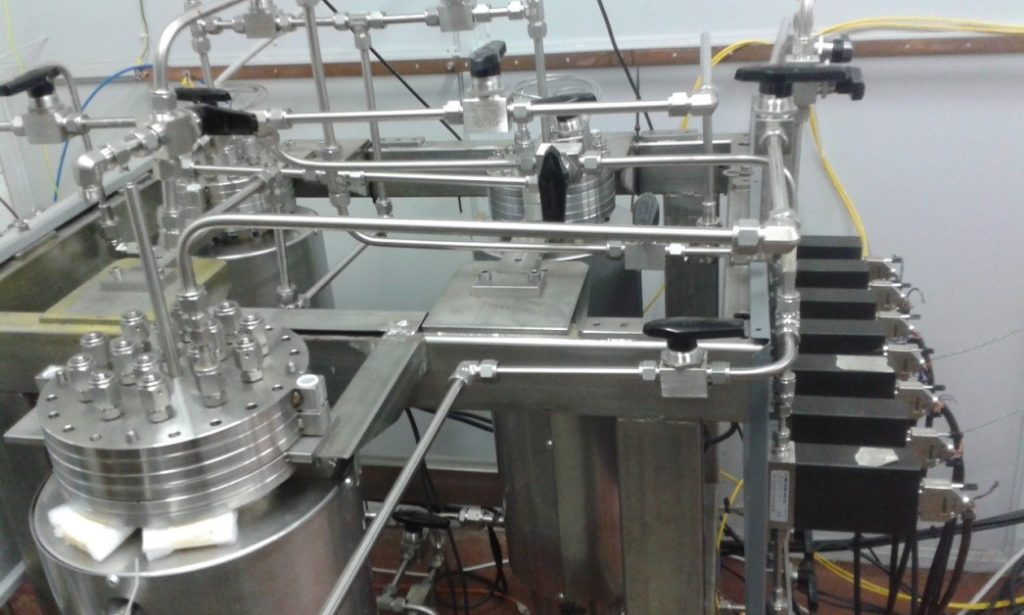
Fusion know-how helps extracting hydrogen from olive mill wastewater
Innovative Pd-membrane reactors for recovering tritium from tritiated waste water in fusion fuel cycle applications

Pd membrane devices for separation of hydrogen isotopes from tritiated water have been developed to operate in continuous processes characterized by high efficiency and increased safety. The innovation introduced in the Pd-membrane reactors for fusion fuel cycle applications consists of innovative mechanical design concepts (multi-tube modules, heating systems, compact size) and new joining techniques of Pd-tubes to steel parts. These developments allow operating detritiation processes in a continuous mode (then more efficiently and safely than the alternative processes based on the use of traditional reactors or on selective absorption in batch operations).
The Pd-membrane reactors have been developed byENEA and have been tested at CEA Cadarache laboratories in a process for recovering tritium from tritiated waste water, EFDA task aimed at developing a detritiation process of soft housekeeping waste. Researches at ENEA Frascati about Pd-membrane are carried out since 90’s years in the frame of the programmes EFDA and then EUROfusion and in collaboration with CEA Cadarache and KIT (former TLK) Institutes. In this field, ENEA developed a relevant expertise in several domains such as material development (diffusion bonding of Pd-Ag sheet for realizing thin-wall permeator tubes), design of innovative Pd-membrane reactor (single and multi-tube finger-like configurations, heating systems, Pd-tubes joining) and, finally, development of detritiation processes via membranes.
A collaboration with ICI Caldaie to develop cogeneration systems for residential application
ENEA collaborated with ICI Caldaie for the realization of a small-medium size (10/30kWe) cogeneration system for residential application. ICI Caldaie are specialists in the design and production of complete high-tech thermal systems. Within the MICROGEN30 project, a prototype of a new hydrogen cogeneration system was developed. The system was fuelled with natural gas and used the Polymer Electrolyte Membrane fuel cell technology for the production of thermal and electric power for residential application.
Building a pd-membrane reformer to produce pure hydrogen and high efficiency PEM fuel cells

In the framework of MICROGEN30, Pd-membrane reactors have been tested at ENEA Frascati laboratories for the production of hydrogen and syngas from reforming of methane and biomass. The project was carried out in 2011-2016 and was funded by the Italian Ministry for Economic Development. The scope of the project was to develop a small size (30 kWe) cogeneration system for producing electricity and heat with high efficiency. The role of ENEA was to design and built a Pd-membrane reformer for producing hydrogen via reforming of methane and biomass (namely, olive mill wastewater): the high purity hydrogen obtained from the membrane unit was used to feed high efficiency PEM fuel cells. The result of the project was the achievement of high overall efficiency (electrical + thermal) of the cogeneration system (around 85-90%) with very low emissions. In particular, the Pd-membrane unit realized by ENEA was capable to produce up to 1 m3/h of ultra-pure hydrogen.
Reforming of olive mill wastewater via membrane processes allows to recover up to 3 kg of hydrogen per ton of wastewater. The same process can be applied for the treatment of other wastewater in alternative to the bio-chemical processes (i.e. bio-digestors). Although cost of Pd-alloy is still a hurdle in large scale applications, Pd-tubes can be applied in hydrogen generators for laboratory and other ultra-pure hydrogen devices. Furthermore, the processes based on dehydrogenation reactions represent the only solution available for some kind of biomass that cannot be treated via the conventional biological processes. This is the case of olive mill wastewater: the reforming process studied allows the reduction of the environmental pollution and its valorisation for producing energy (hydrogen and syngas).
Thanks to this experience, ENEA gathered the needed know-how in the non-fusion sector to collaborate with other major hydrogen production and storage entities therefore new business opportunities were opened.
